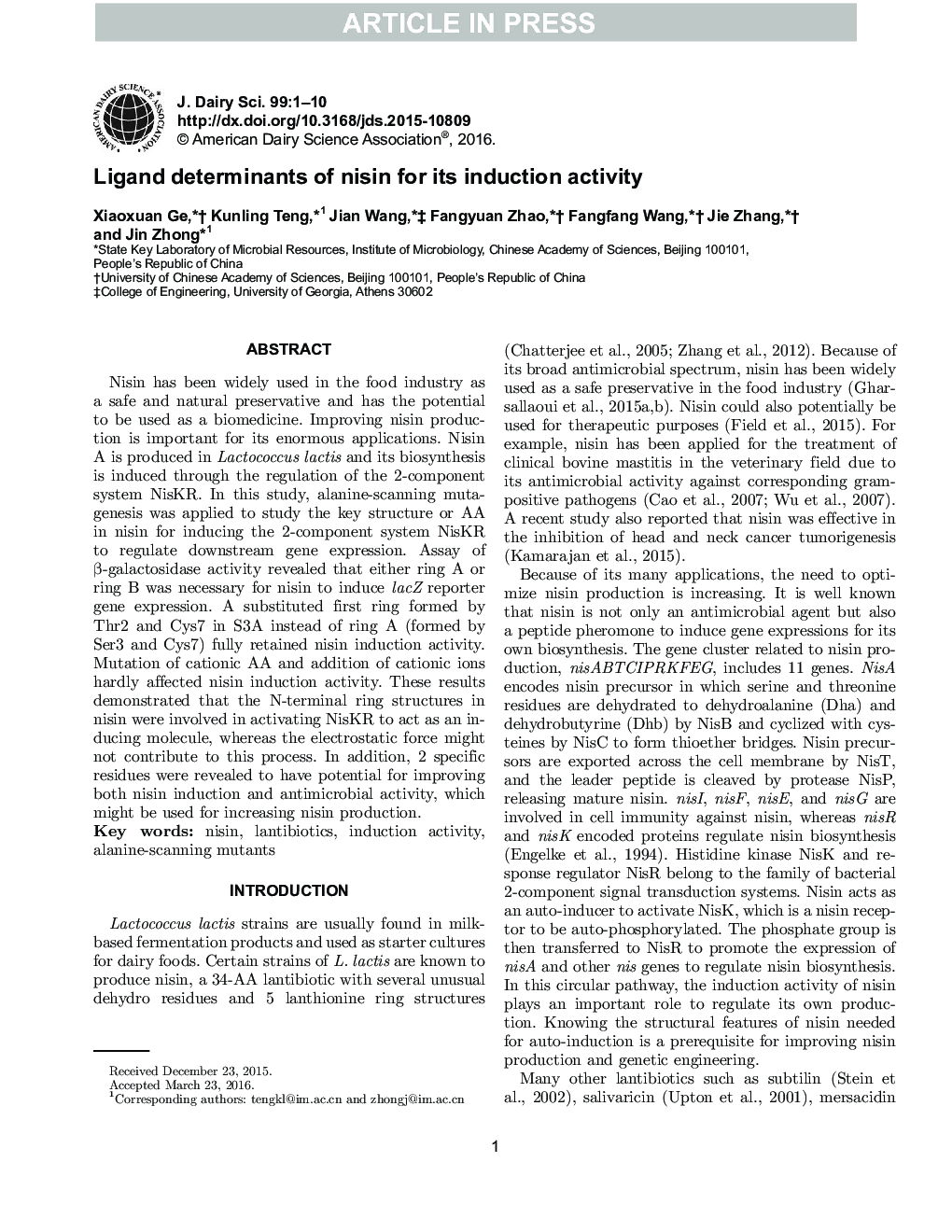| Article ID | Journal | Published Year | Pages | File Type |
|---|---|---|---|---|
| 10973603 | Journal of Dairy Science | 2016 | 10 Pages |
Abstract
Nisin has been widely used in the food industry as a safe and natural preservative and has the potential to be used as a biomedicine. Improving nisin production is important for its enormous applications. Nisin A is produced in Lactococcus lactis and its biosynthesis is induced through the regulation of the 2-component system NisKR. In this study, alanine-scanning mutagenesis was applied to study the key structure or AA in nisin for inducing the 2-component system NisKR to regulate downstream gene expression. Assay of β-galactosidase activity revealed that either ring A or ring B was necessary for nisin to induce lacZ reporter gene expression. A substituted first ring formed by Thr2 and Cys7 in S3A instead of ring A (formed by Ser3 and Cys7) fully retained nisin induction activity. Mutation of cationic AA and addition of cationic ions hardly affected nisin induction activity. These results demonstrated that the N-terminal ring structures in nisin were involved in activating NisKR to act as an inducing molecule, whereas the electrostatic force might not contribute to this process. In addition, 2 specific residues were revealed to have potential for improving both nisin induction and antimicrobial activity, which might be used for increasing nisin production.
Keywords
Related Topics
Life Sciences
Agricultural and Biological Sciences
Animal Science and Zoology
Authors
Xiaoxuan Ge, Kunling Teng, Jian Wang, Fangyuan Zhao, Fangfang Wang, Jie Zhang, Jin Zhong,
